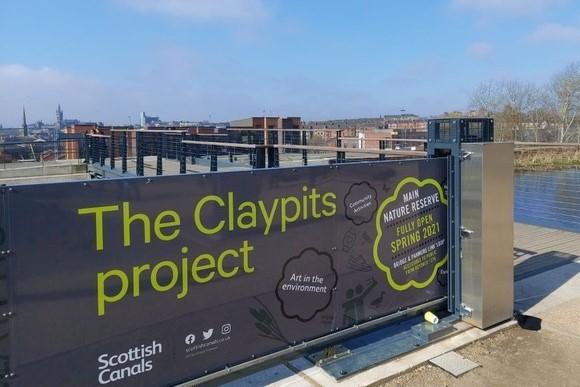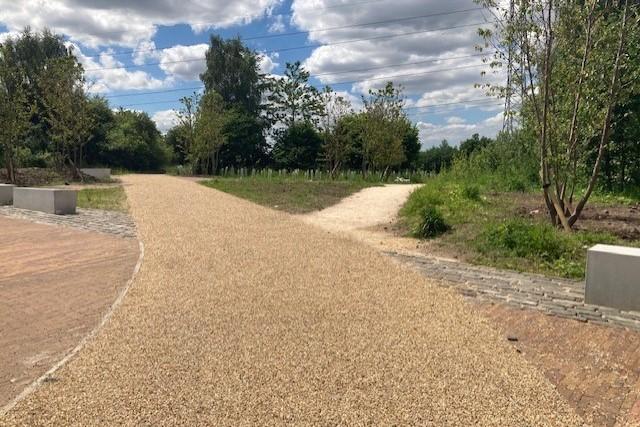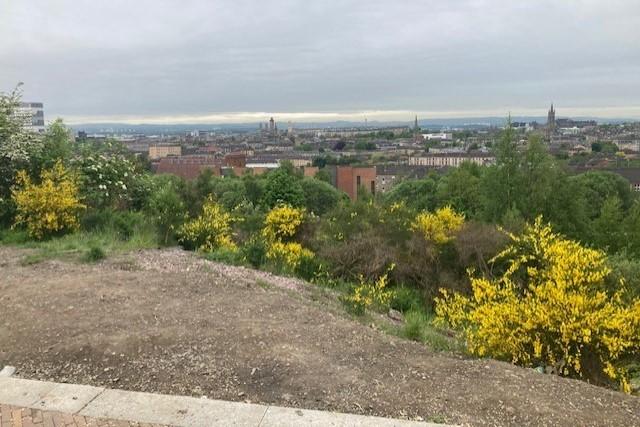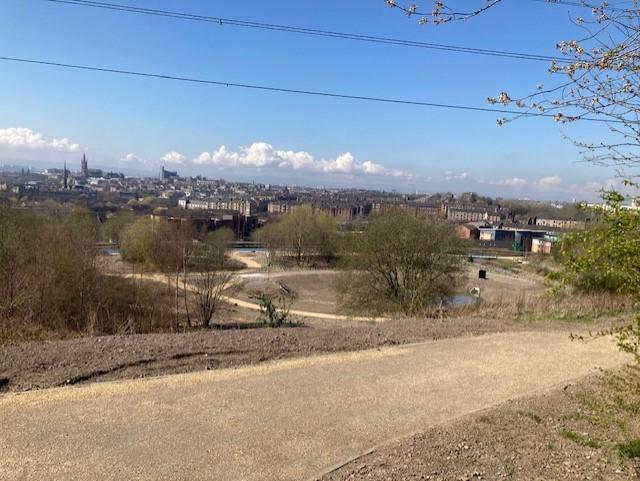Green Infrastructure Project Update - Claypit creation
You have to journey back to around 1791 to trace the roots of the Forth and Clyde canal extension that links Hamiltonhill and Port Dundas. Then the existence of a thriving Clay Pit proved crucial in sourcing a local lining material for the expanding canal network. Today, however, the hustle and bustle of the industrial Clay Pit has been replaced by the altogether more soothing properties of the Claypits Local Nature Reserve.
We should celebrate this reinvention. On a bright, summer afternoon, there is a certain tranquillity about being beside water in a busy city setting. During the pandemic most areas that incorporate a body of water enjoyed a spike in their appeal. That’s certainly been a case along the banks of the Canal and North Gateway project in Glasgow.

The Scottish Canals team are only too aware of that water and enjoyment go hand in hand. What’s more by surrounding the canal area with a range of features and improvements they have hugely expanded on an enticing winning formula. Visit Hamiltonhill today and you will see a rapidly improving urban greenspace.
The increasingly popular Claypits Local Nature Reserve is shaping up to be a superb local asset at the very heart of this site. The stunning viewpoint here offers a chance to reflect and recharge, on a clear day it frames panoramic views over Glasgow and beyond. Some keen-eyed visitors have even been able to pick out Arran – which lies some 40 miles or so in the distance.

Of course not everyone wants a contemplative experience when they visit the outdoors. The pursuit of exercise also contributed hugely to the rise in people accessing local greenspaces such as Claypits. When the highly accessible path, which Glaswegians snappily dubbed ‘The Yellow Brick Road’, opened it lured locals in and visibly confirmed that this site was ‘open for business’. Together with the long established canal path, where cyclists, joggers and walkers mingle, it was a key part of the jigsaw in establishing a network of routes for pedestrians.
A series of organised walks followed, as did a natural play area for children and a classroom area for education. June 29th brought an online Out and About in the Claypits event which invited the community, and anyone else who wanted to come along, to learn more about the site and encouraged volunteers who are increasingly passionate about nature and wildlife to get more involved.

Thrill-seekers weren’t left out. At Garscube Link fun was on the agenda in the shape of slick new slides beckoning young and old alike to let go and feel the air rushing past. It’s all part of a drive to encourage locals, organisations and individuals to use the vibrant site and embrace it as their own. Litter-picks and bird watching events have been held and a local primary school – St. Theresa’s – had twenty of their 9-year old children helping to plant new trees.
Visitors will find a good number of trees and shrubs on the site, which is great news given the current drive to protect and increase our leafy assets. The moves at Claypits fit well with Scottish Government ambitions to increase tree planting in response to the Climate Emergency. There is growing acceptance that trees (and hedges) have huge potential to simultaneously increase biodiversity and capture carbon. The loss of hedgerows in the UK, for example, has been achieved on an industrial scale, largely on the back of the drive in the period immediately after 1945 to increase agricultural output. Put simply trees and hedges look good, and do good.

We may witness some Covid-inspired anxiety about being outdoors in the aftermath of a pandemic and if we do then good green infrastructure is going to be crucial in overcoming barriers and luring us back to normality. That the outdoors, physical activity and fresh air are good for our mental and physical health is no longer in dispute, and the promising advances at Claypits will be welcomed with open arms, not feet of clay.

Notes
The Green Infrastructure Fund Is part of the Scottish Government’s current European Regional Development Fund (ERDF) programme, which runs through to 2023. This is one of two ERDF Strategic Interventions led by NatureScot – the other is the Natural & Cultural Heritage Fund.
You can follow the European Structural Funds blog for ESF activities, news and updates. For twitter updates go to @scotgovESIF or use the hashtags #ERDF and #europeanstructuralfunds
A range of funders are involved in this project including Glasgow City Council, Scottish Canals, Sustrans, Nature Scot, and NHS HSCP.



